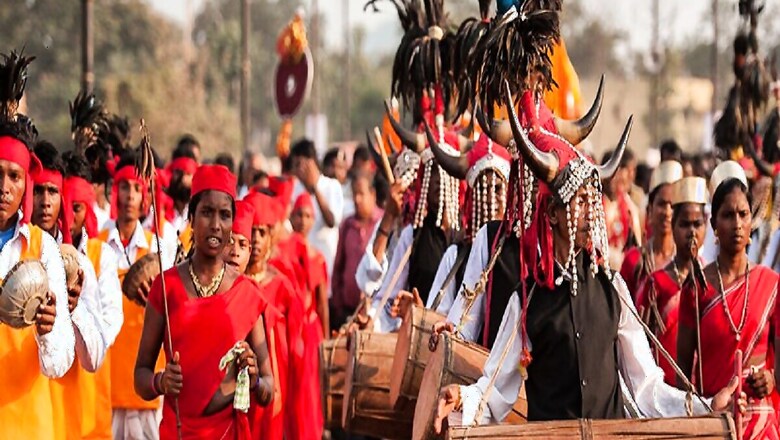
views
Celebrated by lakhs of tribal people and those from other communities in Jagdalpur district of Bastar in Chhattisgarh for well over 600 years, the historic Dussehra festival is under Covid-19 shadow this year.
With the district having around 2,000 active cases of the pandemic presently, everyone is worried about any possible community spread during the festivities. The organisers are planning for safety measures including efforts to avoid crowds, ensure social distancing and limited festivities.
However, as prevalent in other parts of the country, the Dussehra festival is not a daylong event in Jagdalpur and runs for 75 days, starting from Hareli Amawasya (a farm festival celebrated on a new moon night) with the tradition of Paat Jatra (involving bringing wood from the forest to build a chariot). This year, with Malmas (an inauspicious period according to the Hindu calendar) having some extra days, the Dussehra is being celebrated for around 105 days and festivities will culminate on October 31 with the customary departure of goddess Danteshwari.
In another interesting feature of the event celebrated by lakhs of people every year in Bastar, there is no burning of effigy of demon king Ravan and it’s only about the worship of Danteshwari, revered goddess of tribals in Chhattisgarh, and countless deities of the region.
However, the event organised by Dussehra Utsav Samiti and Temple Committee is in doubt this year with Chhattisgarh ranking among the states worst affected by the novel coronavirus outbreak.
The organisers are pondering over safety guidelines so that everyone who takes part in the festivities remains safe and disease-free.
The scion of the local rulers, Kamal Chand Bhanjdeo, said on the issue that he has been urging devotees, especially elderly people and kids, to stay away from the festival this year. “Those taking part in the event are requested to put themselves in quarantine for a while so that they don’t remain a threat for others during the festival. Those accompanying the chhatra (umbrella) of various deities from the region are requested to keep the number of participants low,” he added.
Saying that preventing the virus spread is the focus this year, Bhanjdeo urged the devotees to turn up for the event in lesser numbers, affirming that the age-old tradition will be kept intact. He also asked people to maintain social distancing during the Rath Yatra.
The royal family scion also urged the devotees to worship goddess Danteshwari at their homes.
The event has been facing challenges this year with residents of Kakaglur village initially declining to offer wood for the making of the rath (chariot). However, following lengthy deliberations, the villagers agreed to provide the wood which has reached Jagdalpur and the preparation of the rath is underway. The chariot with the chhatra of goddess Danteshwari takes a round of the city as part of the festivities every year.
The gram sabha at Kakaglur was averse to offering wood as the customary felling of trees is destroying the forests and locals allege that timber is also smuggled in large amounts on the pretext of taking wood for the chariot.
As part of the tradition, the chariot is prepared with traditional tools and no modern equipment or machine is used.
It is believed that erstwhile ruler Maharaja Purushottam Deo had initiated the Bastar Dussehra in the early 15th century. Led by the royal family, the ten-day main event holds worship sessions of goddess Danteshwari. As part of mystical tradition, on the first day of the event, a girl supposedly in possession of divine powers, assigns the permission of the event to the royal family. On the second day, aarti and salami (salutation) takes place. On the ninth day, goddess Danteshwari arrives at the entrance of the city in a palki or palanquin from Dantewada and is welcomed by the king. On the tenth day, Dussehra is celebrated and the king holds court and allows people to present their requests and aarti is also organised.
(Inputs from Vinod Kushwaha, Jagdalpur)
Read all the Latest News and Breaking News here


















Comments
0 comment